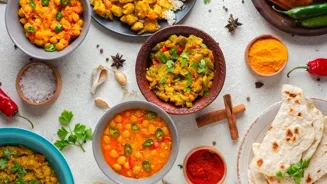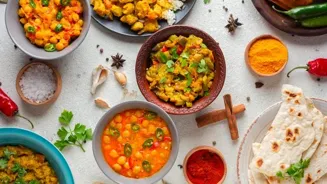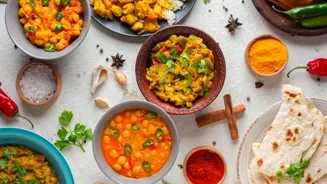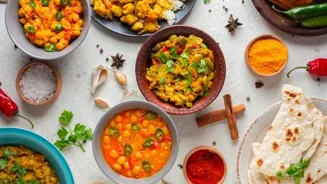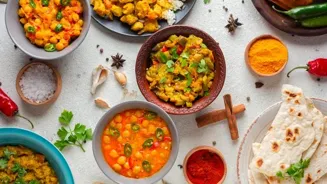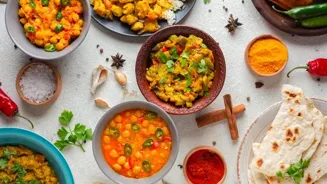Discover the cultural phenomenon of street food vendors in Indian cities! Uncover their impact on economy and community
India, a land known for its vibrant culture and diverse traditions, boasts a unique
culinary landscape where street food holds a special place.
Street food vendors, often seen as the unsung heroes of Indian cities, play a pivotal role in shaping the cultural identity and economic vitality of urban spaces.
Their contribution extends beyond just providing affordable meals; they are custodians of local flavors, community builders, and entrepreneurs who contribute significantly to the informal economy.
Street food in India: cultural experience through social interaction
Street food vending in India is not just about selling food; it's a cultural experience. The sights, sounds, and smells of bustling streets filled with food vendors create an immersive sensory environment that attracts people from all walks of life.
The vendors themselves are often deeply entrenched in their communities, having established relationships with their customers over generations. They are not just selling food, they are often sharing stories, offering advice, and creating a sense of belonging for their patrons.
This social interaction is a key element of the street food experience, making it more than just a transaction. It becomes a cultural exchange, a shared moment of connection in the midst of urban life.
The affordability of street food also makes it accessible to a wide range of people, transcending socio-economic barriers and fostering a sense of unity.
Indian street food: diverse, innovative, fresh; a culinary adventure
The variety of vegetarian street food available in Indian cities is astounding. From crispy dosas in South India, filled with potatoes and served with sambar and chutney, to the tangy golgappas in North India, each region has its own unique culinary offerings.
These dishes are often prepared with traditional recipes passed down through generations, preserving the authenticity of local flavors. Street food vendors also serve as innovators, constantly experimenting with new ingredients and techniques to create unique and exciting dishes.
This culinary creativity is a testament to the dynamism of Indian street food culture, ensuring that there is always something new and delicious to discover.
The emphasis on fresh, locally sourced ingredients further enhances the quality and flavor of these dishes, making them a healthier and more sustainable option compared to some restaurant meals.
Street food vendors vital to Indian economy, facing challenges and need for formalization
Street food vendors are integral to the informal economy of Indian cities, providing livelihoods for millions of people. Many vendors come from marginalized communities and rely on street food vending as their primary source of income.
By creating jobs and supporting local supply chains, they contribute significantly to economic growth. However, they also face numerous challenges, including lack of access to credit, insecure working conditions, and harassment from local authorities.
Efforts to formalize the street food sector, such as providing vendors with licenses and access to infrastructure, can help to improve their livelihoods and ensure the sustainability of this vital part of the Indian economy.
Supporting street food vendors is not just about preserving a cultural tradition; it's about empowering entrepreneurs and strengthening communities.
Street food vendors enhance the vibrancy of Indian cities
The presence of street food vendors also contributes to the overall vibrancy and character of Indian cities. They create lively public spaces where people can gather, socialize, and enjoy the flavors of their city.
Street food stalls often become landmarks, serving as meeting points and community hubs. The aroma of food wafting through the air, the chatter of vendors and customers, and the colorful displays of ingredients and dishes all contribute to the unique atmosphere of Indian street food markets.
By enhancing the streetscape and creating a sense of place, street food vendors make cities more livable and enjoyable for residents and visitors alike. They add a layer of authenticity and charm that is often missing in more modern and commercialized urban environments.
Challenges faced by street food vendors in Indian cities
One cannot deny the challenges that street food vendors encounter on a regular basis. Issues concerning hygiene are frequently raised, with concerns about food safety practices and the cleanliness of vending environments.
Overcrowding and traffic are other common challenges, as street food stalls often occupy busy sidewalks and contribute to congestion. Balancing the needs of street food vendors with the concerns of public health and safety is a complex issue that requires careful planning and regulation.
Implementing training programs for vendors on food safety practices, providing access to clean water and waste disposal facilities, and establishing designated vending zones are some of the steps that can be taken to address these challenges.
Collaboration between government agencies, community organizations, and street food vendors is essential to creating a sustainable and thriving street food culture in Indian cities.
Street food vendors vital for Indian culture, economy, and community
In conclusion, street food vendors are much more than just providers of affordable meals. They are cultural ambassadors, economic contributors, and community builders who play a vital role in shaping the character of Indian cities.
By preserving traditional flavors, creating vibrant public spaces, and providing livelihoods for millions of people, they contribute significantly to the cultural identity and economic vitality of urban India.
Addressing the challenges faced by street food vendors and supporting their efforts to formalize their businesses is essential to ensuring the sustainability of this unique and invaluable part of Indian culture.
Recognizing and celebrating the contributions of street food vendors is a way to acknowledge their importance and to ensure that this cultural phenomenon continues to thrive for generations to come.
AI Generated Content. Glance/InMobi shall have no liability for the content
